- Understanding the Importance of Different Types of Structural Surveys and Inspections
- Common Types of Structural Inspections
- Why a Structural Engineer’s Site Visit Is Essential
- Common Questions About Structural Engineer Site Visits
- Conclusion: The Importance of a Thorough Structural Inspection
If a Structural Engineer is required to evaluate a structural defect in your property, industrial structure, or infrastructure, a site visit is essential.
Seeing the structure first hand enables the engineer to assess the affected area directly, assess other parts of the structure that may have influenced the defect, assess other areas that may be affected by the same issue, and make fully informed decisions, ensuring the safety and stability of your property.
During a site visit, the structural engineer can far better observe and analyse the actual conditions of the building or structure, which may not be fully captured in drawings, photographs or reports. They can identify any potential issues that may include:
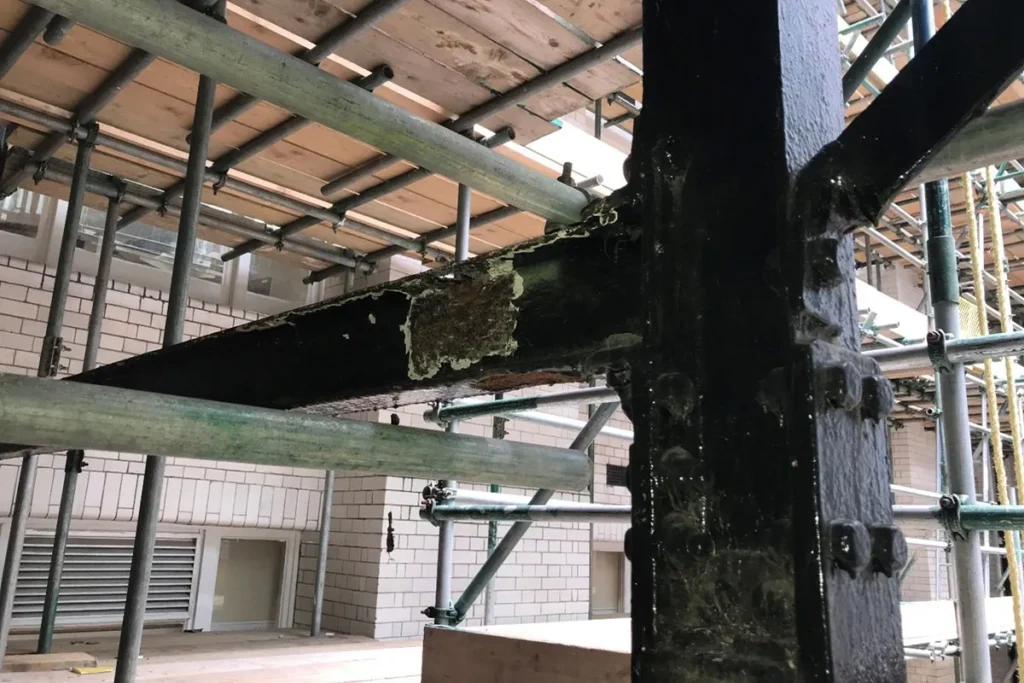
Cracks in Structural Elements:
Cracks in walls, foundations, beams, or columns are often signs of underlying structural problems. These cracks can result from foundation movement, thermal expansion, or excessive loads, and they require immediate attention to prevent further damage. Hairline cracks may not be visible from photos and if the engineer does not visit the site, they will not be able to test the depth and movement of the crack.
Foundation Problems:
Engineers often discover signs of subsidence, heave, or uneven settlement in a building’s foundation. These issues can cause significant structural instability, leading to cracks and misalignment throughout the building. If, for example, a crack is caused by heave, a photo of the problem itself may not include the offending tree stump nearby the property for example, which might tell the engineer that the recently felled tree is no longer drawing moisture from the soil, causing the ground to swell and damage the property. The engineer may also need to take soil samples, which is impossible without a site visit.
Water Damage and Dampness:
Rising damp, penetrating damp, and timber rot are common issues that can severely weaken a building’s structural integrity. These problems are typically caused by moisture ingress, which can lead to deterioration of walls, floors, and foundations. On site, and engineer may wish to test the structural integrity of a timber structural member, for which he or she will need to push a test instrument into the wood. This wouldn’t be possible if the engineer didn’t visit the site.
Structural Movement:
Lateral movement, roof spread, and deflection in beams are indicators of serious structural issues. These movements can cause walls to bow, roofs to sag, and beams to bend, all of which compromise the safety of the structure. Deflection is not possible to measure from photos or a customer’s own drawings.
Corrosion and Deterioration:
Engineers often find corroded steel and deteriorating concrete during inspections. These issues are particularly concerning in reinforced concrete structures, where rusting steel can lead to cracking and weakening of the concrete. Often the nature of the corrosion needs to be tested at a basic level by scrutinising the surface of the affected structural member through touch, hence a site visit is needed.
Inadequate Structural Support:
Inspections may reveal undersized beams or columns, as well as improper load distribution. These issues mean that the structural elements are not strong enough to support the building’s weight, leading to potential collapse. Such elements need to be measured properly, requiring an engineer to be present with the appropriate measuring tools and instruments.
Incompatible Modifications:
If load-bearing walls have been removed or altered without proper support, or if extensions have been poorly integrated, engineers can identify these modifications as significant risks to the structure’s stability. Many factors need to be inspected on site in order for the engineer to reach their conclusion.
Subsidence and Soil Issues:
Issues like tree root damage or soil erosion can cause the ground beneath a building to shift, leading to foundation problems and structural instability. The cause needs to be investigated and when the engineer is on site, he or she may need to inspect nearby trees, other structures, nearby building work, underground drains and multiple other factors, to best determine the source of the issues.
Vibrational Damage:
Buildings located near heavy traffic or construction sites may experience damage from vibrations. Engineers can identify these issues, which often manifest as cracks or weakened structural elements. To do this, they may need to take measurements or collect data based on what is happening around the structure in question.
Thermal Movement:
Changes in temperature can cause materials to expand and contract, leading to cracks and movement in the structure. Engineers can assess the extent of this damage during a site visit, but they would be unable to comment on the ambient temperature changes without being at the site.
Poor Construction Practices:
Substandard construction practices, such as inadequate reinforcement or the use of poor-quality materials, are often detected during a site visit. These issues can compromise the building’s overall integrity and safety, but it requires an engineer on site to identify to find the given issue(s).
In conclusion, a site visit allows the engineer to take measurements, gather data, and ask questions to better understand the project and its requirements.
Furthermore, a site visit provides the opportunity for the engineer to interact with other professionals involved in the project, such as architects, contractors, or building owners. This collaboration can lead to a more comprehensive and effective resolution, as different perspectives and expertise are brought to the table.
If you are considering hiring a structural engineer, make sure to prioritise a site visit as part of the process.
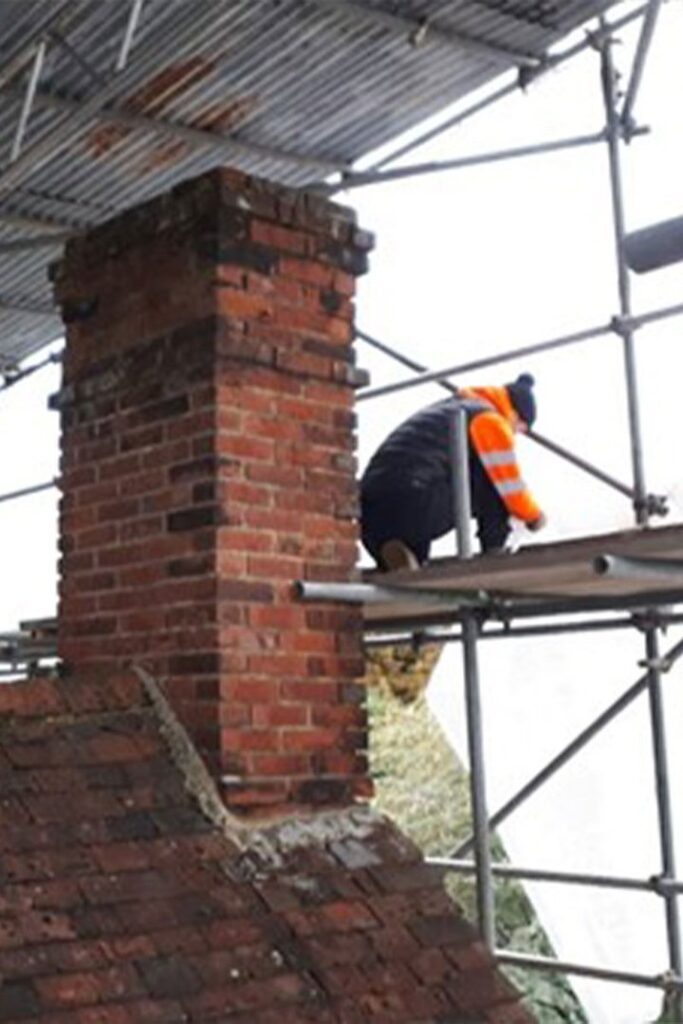
Understanding the Importance of Different Types of Structural Surveys and Inspections
To appreciate the necessity of site visits, it’s essential to understand the various types of surveys and inspections available for properties.
When purchasing or assessing a property, different professionals may be involved, including chartered surveyors (certified through the Royal Institution of Chartered Surveyors – RICS). A RICS Surveyor may cover aspects such as property dimensions, the overall condition of the building’s roof, insulation, waterproofing, windows, doors, and utility services like electrical, water, gas, and drainage.
While a RICS survey may include observations on structural elements, surveyors are not specialists in this area. As a result, they often recommend engaging a chartered structural engineer for a more detailed structural inspection.
Common Types of Structural Inspections
A structural inspection, conducted by a qualified structural engineer, addresses a wide range of concerns related to the building’s structural integrity. These inspections are crucial for identifying issues that may not be immediately visible but could lead to significant problems if left unaddressed. Common areas of focus include:
- Cracks in walls or other structural components
- Sloping or sagging of floors, roofs, or ground surfaces
- Defects resulting from movement, such as foundation shifts, roof spread, or inadequate support
- Subsidence-related movement
- Timber deterioration due to water ingress
- Re-inspections following remedial work for subsidence or other issues
- Assessing the load-bearing capacity of walls considered for removal
- Evaluating chimney breast support, either historically or for planned removal
- Feasibility of loft or barn conversions
- Assessing construction support when a wall or floor is proposed for removal
- Evaluating the structural implications of tree and drainage proximity, ground consolidation, wells, sinkholes, etc.
- Assessing existing structures at the interfaces of proposed extensions
- Inspecting exposed beams or foundations for Building Control Regularisation
- Evaluating non-standard construction forms, such as timber framing, large concrete panels, or steel framing
- Assessing deteriorating concrete and exposed, corroding reinforcement
- Inspecting vulnerable features like balconies and escape stairs
- Assessing structural arrangements for the installation of equipment like solar panels or mechanical plant
- Conducting stability and integrity assessments following vehicle impacts
- Assessing partially collapsed buildings and their impact on remaining structures
These areas are not only critical for ensuring the current safety of a property but are also vital when planning future modifications or extensions.
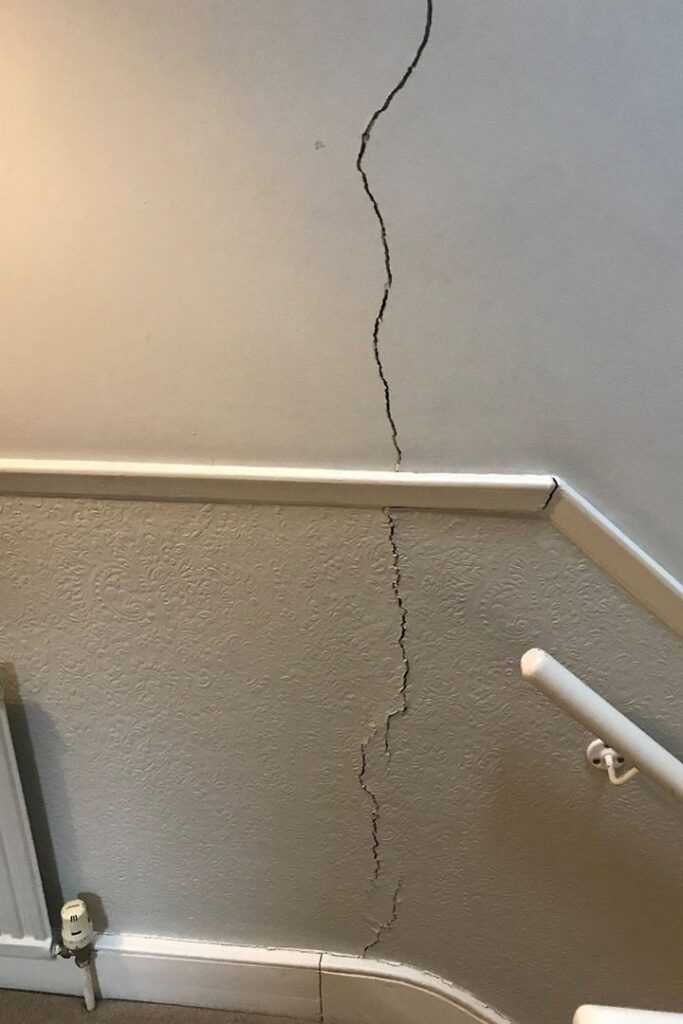
Why a Structural Engineer’s Site Visit Is Essential
When it comes to assessing structural defects, a site visit allows the engineer to inspect the property closely, considering the context, construction methods, proximity to trees and drains, and the materials used.
The engineer can take measurements, use tools like probes and levels, and directly observe conditions that photographs or descriptions might miss.
For instance, determining the load-bearing status of walls or floors is a task best performed on the site. During the visit, the engineer can see exactly what the element supports and assess the loads on any parts to be removed or altered.
Similarly, when designing extensions – whether sideways or upwards – a visit allows the engineer to inspect the existing foundations and walls, considering the implications of the proposed works and gathering necessary information for the extension’s support.
Inspecting the installation of remedial or alteration works is also best done in person. Although photographs, descriptions and videos can provide valuable information, they cannot fully capture the nuances of the site, leading to potential oversights.
In contrast, a site visit allows the engineer to gain a comprehensive understanding of the situation, ensuring that no critical detail is overlooked.
Common Questions About Structural Engineer Site Visits
Q: What does a structural engineer look for during a site visit?
A: During a site visit, a structural engineer will assess the overall structural integrity of the property. This includes checking for cracks, sagging floors or roofs, signs of subsidence, timber deterioration, and other potential defects. The engineer will also evaluate the load-bearing capacity of walls and floors, especially if alterations or removals are planned.
Q: Can a structural inspection be done remotely?
A: While technology allows for remote inspections via video calls, these are not a substitute for a physical site visit. A video call cannot replace the ability to see details first hand and consider them within their broader context. The engineer must take responsibility for opinions and decisions, which cannot rely solely on remotely obtained information. The only exception might be additional information provided after an initial site visit, such as further exposure of a partially observed element.
Conclusion: The Importance of a Thorough Structural Inspection
A site visit by a structural engineer is essential for obtaining all the necessary information to prepare a comprehensive report. Physical inspections where the engineer can view, measure, probe, and evaluate are indispensable.
Photographs, descriptions, measurements, and even video links cannot replace the thoroughness of an in-person assessment, particularly when the engineer is responsible for the accuracy and reliability of the information used.
If you’re considering modifications to your property, such as removing a wall, converting a loft, or planning an extension, a structural engineer’s site visit should be a priority. The insight gained during these visits is crucial for ensuring the safety, stability, and longevity of your property.
During the site visit, the structural engineer will assess the current condition of the property, identify any potential structural issues and determine the feasibility of the proposed modifications.
They will inspect the foundation, walls, roof, and other structural elements to ensure that they can support the planned changes.
Additionally, the engineer will consider factors such as soil conditions, building codes, and safety regulations to provide recommendations that meet both your needs and legal requirements.
By conducting a thorough site visit, the structural engineer can provide you with a detailed report outlining the necessary steps to take to ensure the structural integrity of your property.
This report will serve as a valuable guide for contractors and builders during the construction process, helping to prevent costly mistakes and ensuring that the project is completed safely and successfully.
In conclusion, a site visit by a structural engineer is an essential step in any property modification project or defect inspection. By investing in this crucial assessment, you can rest assured that your property will be in good hands and that any changes you make will be structurally sound and durable for years to come.
Case studies
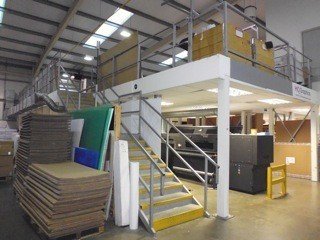
Structural assessment
Location: Hatfield
We were asked to conduct an assessment on this mezzanine structure in Hatfield, to determine whether or not it would be able to sustain a change in purpose.
Our chartered structural engineers surveyed the structure.
Interviewed the client about the change of use.
Conducted calculations and submitted findings to the client in a report.
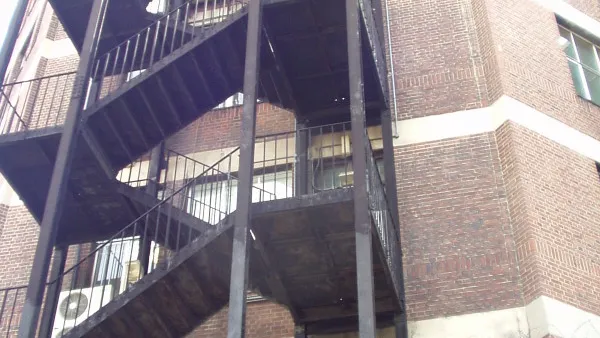
Condition report, fire escape
Location: Paddington
The owner of this building in Paddington asked us to conduct a routine fire escape staircase inspection in line with the Regulatory Reform (Fire Safety) order 2005.
We visited the site and conducted the inspection.
Several small defects identified.
A compliance report produced, highlighting recommendations.
The customer achieved their regulatory compliance.
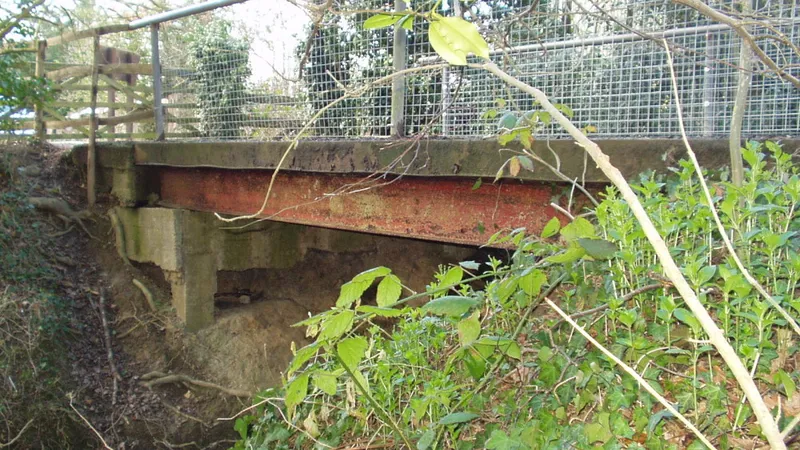
Bridge inspection
Location: Epsom
We were asked to provide expertise in diagnosing the issues affecting this bridge as there had been some ground movement causing a structural shift.
Met with the client on site and inspected the structure.
Diagnosed the issue and recommended underpinning.
Documented our findings and solution in a comprehensive report.
The client was able to instruct a builder to strengthen the bridge.